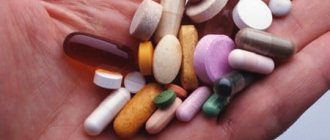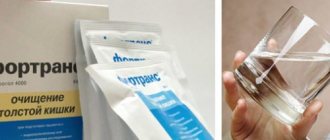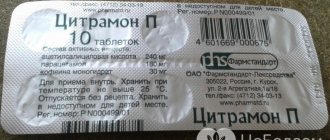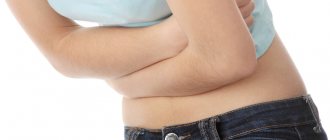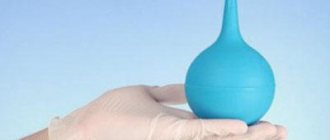Loose and frequent stools are probably one of the leading causes of discomfort. Not only does a person completely disappear from life during diarrhea, but also after it a very unpleasant feeling of emptiness remains in the stomach for several days.
This feeling is associated with the massive death of beneficial bacteria, without which the intestines cannot function normally. But there is good news: this condition can be cured, you just need to compensate for the deficiency of microorganisms. So, how to restore intestinal microflora after diarrhea? First you need to figure out why she dies.
What is microflora and what are its benefits?
The first beneficial microorganisms settle in the intestines after the birth of a child.
But the final microflora occurs only at school age. Therefore, children are more sensitive to the action of pathogenic factors, and their intestines are more likely to suffer after taking antibiotics. About 500 species of bacteria live on the mucous membrane of the large and small intestines, but 99% of them are only a few beneficial species:
- lactobacilli;
- bifidobacteria;
- enterococci.
The remaining 1% is opportunistic microflora, which cannot reproduce while the mucous membrane is populated by beneficial microorganisms. Lacto- and bifidobacteria help digest food and prevent rotting and fermentation. Pathogenic microorganisms, on the contrary, contribute to the development of putrefactive processes and produce toxic substances.
Bacteria inhabit all parts of the digestive tract - from the oral cavity to the rectum. The least amount of them is found in the stomach, most of them are found in the colon.
Intestinal microflora performs the following functions:
- protection against colonization by pathogenic microorganisms;
- digestive – processing of cellulose and undigested carbohydrates, saponification of fats, breakdown of bile acids;
- slowing down the motility of the small intestine and accelerating peristalsis in the final sections of the colon;
- neutralization of certain toxic substances;
- synthesis of B vitamins, folates, vitamin K;
- immune function - stimulation of the production of typical antibodies, familiarization of lymphocytes with various antigens, production of cytokines and other active substances involved in immune reactions.
Therefore, even partial death of the intestinal microflora affects the functioning of the entire organism.
Who lives in the intestines
According to scientists, more than 500 species of tiny living creatures live in the lower parts of the digestive canal. Taken together, this is a fragile system of relationships between the human body and its symbionts, which can easily be disrupted in a few days. But it can take months or even years to restore healthy microflora.
It is formed by anaerobes (organisms living in conditions of oxygen deficiency or its complete absence). About 95% of them are populations of clostridia, peptostreptococci, veillonella, lactobacilli, bacteroides and bifidobacteria.
Among the aerobes in the large intestine live:
- Lactose-negative enterobacteria, represented by serrations, citrobacters, and proteas.
- Yeast-like fungi of the genus Candida, recognized as opportunistic pathogens.
- Staphylococci. They come from the environment. Restore nitrogen compounds.
- Enterococci. Carry out fermentation processes.
- Escherichia coli. Breaks down lactose, produces vitamin K and B groups, inhibits the proliferation of pathogenic microbes, stimulates the formation of antibodies.
The inhabitants of the gastrointestinal tract are divided into obligate and opportunistic (facultative) parts.
The most significant representatives of the first group are:
- Bifidobacteria that form the luminal and parietal flora of the large intestine. They dominate the microbial landscape in infants who are fortunate enough to be breastfed.
- Lactobacilli are responsible for the pH of the environment. They suppress the proliferation of putrefactive bacteria. The waste product of lactobacilli is lactic acid.
How does dysbacteriosis manifest itself?
A diagnosis is a condition that is a consequence of other diseases. It cannot be ignored, because... Violation of the ratio of beneficial and opportunistic flora leads to unpleasant consequences. Manifestations of dysbacteriosis are nonspecific. These include:
- bloating;
- flatulence or rumbling in the stomach;
- diarrhea or loose stools;
- constipation;
- decreased appetite;
- symptoms of hypovitaminosis;
- skin rashes.
If after a course of antibiotic therapy some of the listed symptoms are noticed, it is worth considering how to restore the intestinal microflora. Some begin treatment after stool tests for dysbiosis. But doctors do not advise buying probiotics if dysbiosis is detected after examination. It is not treated without clinical symptoms.
Stool analysis for dysbacteriosis is not indicative. It is not always collected and delivered to the laboratory following all the rules. Feces reflect the condition of only the final section of the intestine and will not say anything about the small intestine or other parts. For those who care about the state of their intestinal microflora, aspiration of intestinal contents is more useful. In patients with severe pathologies, a wall biopsy may be required.
How microflora is formed
The intestinal ecosystem of a newborn is already populated by facultative aerobic bacteria in the first hours of life. Oligosaccharides from breast milk stimulate the growth of beneficial microbes and inhibit the activity of pathogenic microbes. Therefore, dysbiosis in a breastfed baby is an extremely rare phenomenon.
The “artificial” baby cannot boast of a microbial balance, and therefore endures critical periods more difficult: teething, weaning from the pacifier. In this case, the following are possible: bloating, fever, crying, poor sleep.
What are probiotics and how do they work?
Treatment is necessary for clinically significant symptoms. There are two types of drugs used, which differ significantly:
- prebiotics – lactulose, inulin, some products. Prepare the intestines for colonization by bacteria;
- probiotics are preparations of living microorganisms that are colonized inside, as well as some food products.
For a healthy body, the state of dysbacteriosis is transient and is easily eliminated on its own after the end of the pathogenic factor. Therefore, antibiotic treatment in itself is not an indication for restoring the microflora.
You need to start using the drugs after getting rid of foci of chronic infection in the teeth and ENT organs. Be sure to eat right. In most cases, improving your diet allows you to get rid of the unpleasant symptoms of dysbiosis. If this does not help, switch to drug therapy. It is optimal to combine prebiotics and probiotics.
Coarse fiber creates a breeding ground for bacteria and facilitates their colonization.
But with pronounced changes in the intestinal mucosa, the use of probiotics will give a temporary effect. After finishing the dose, the bacteria will die and the symptoms will return.
How to restore the intestinal mucosa with medications
In order to restore the mucous membrane, official medicine uses drugs that are aimed at increasing cell regeneration. It is important to note that such drugs are prescribed by a gastroenterologist. You should not prescribe medications yourself, since the right choice will determine how effective the treatment will be and whether it will worsen the current situation. A number of medications that help restore the mucous membrane include the following:
- "Misoprostol";
- "Bifiform";
- "Venter";
- "Omeprazole";
- "Novobismol";
- "Cytotech";
- "Lactobacterin";
- "De-Nol";
- Lansoprazole.
Each of the above drugs has a different way of influencing the mucous membrane and is prescribed based on the reason, which negatively affects the person’s condition. Even if the patient may not have obvious signs (pain or discomfort) of a disorder in the intestinal mucosa, the doctor, after examination, may prescribe a drug that will help cope with the disorders at the initial stage.
Healthy diet
You need to start treatment at home by changing your diet. It is recommended to choose foods that can act as prebiotics and probiotics at the same time. They have beneficial properties:
- any fermented milk products;
- butter;
- coarse fiber and pectins, which are found in plant foods;
- essential amino acids and arginine.
Sources of amino acids include poultry, fish, parsley, spinach, celery, nuts, pumpkin seeds and peas. Nutrition for dysbacteriosis should be regular and nutritious. Fasting and dieting for weight loss are not allowed. They are often deficient in proteins and animal fats, which negatively affects the restoration of microflora.
During the treatment period, you should not eat fried, spicy, salted or smoked foods, as well as any food with preservatives or dyes. They worsen the condition of the intestines and lead to the appearance of skin rashes.
Diet for mucosal restoration
It is extremely important to regulate nutrition during recovery, since its quality will determine how quickly the problem can be overcome. There are several basic rules:
- It is necessary to exclude alcohol, fatty, spicy, fried foods.
- You should take a large amount of fermented milk products.
- It is important to eat as many plant foods as possible and as few animal products as possible.
- It is necessary to provide gentle nutrition - food should be warm, but not hot, not too salty, pepper and other seasonings should be excluded, food should be mushy or liquid.
- It is necessary to reduce the consumption of flour and sweet products to a minimum.
A gastroenterologist will help coordinate nutrition and prescribe a diet from the treatment table, which is selected on an individual basis. It is important to follow all recommendations and follow a diet, as this will help restore the functioning of the intestinal mucosa as quickly as possible.
Medicines
Drug therapy is carried out only if proper nutrition does not produce results. Various types of drugs can be used for treatment:
- powder for preparing a suspension;
- capsules with bacteria;
- liquid solution.
The composition of medicines includes various strains of microorganisms. It’s hard to say which of them will be effective in a particular case. Restoring gut health quickly is not always possible.
Research shows that after passing through the acidic environment of the stomach, most of the microflora dies. Therefore, it is useful to use powder from lacto- and bifidobacteria in capsules. They are made from gelatin and dissolve only in the intestines.
There is evidence that not only living cultures restore microflora, but also dead bacteria. This occurs due to the development of immune reactions to the remains of microbial cells.
Folk remedies for improving microflora involve the use of various types of fermented milk products, decoctions of burnet, dill seeds, and calamus roots. Treatment with mash is promoted. But the use of folk remedies must be treated with caution so as not to harm yourself.
To normalize the composition of the microflora, it is often enough to change the list of food products and stop the course of antibiotic therapy. It may take several days for the body to eliminate unpleasant symptoms. If they do not go away, drug treatment is necessary.
Antibiotics have saved the lives of millions of people. However, their use was not without such side effects as disruption of healthy intestinal microflora. It should be noted that normal microflora prevents the proliferation of foreign microorganisms in the body.
It is also actively involved in general metabolism, supplying the intestinal mucosa with necessary substances. Healthy microflora optimizes digestion, is responsible for the formation of immunity, and synthesizes some vitamins and essential amino acids.
Lactobacillus preparations
Used to restore normal intestinal microflora, treat and prevent complications that develop after taking antibiotics.
This group of drugs is highly effective for antibiotic-associated diarrhea caused by taking lincomycin®, clindamycin®, and beta-lactams.
This group of drugs has no contraindications or side effects.
Live, lyophilized lactic acid bacteria cells:
- restore healthy intestinal microbiocenosis;
- reduce the manifestation of allergic reactions;
- help increase immunity and general resistance of the body;
- improve digestion processes and eliminate dyspeptic disorders;
- applicable as part of complex therapy of necrotizing enterocolitis in newborns.
Lactobacilli used to restore microflora are eliminated from the body within two weeks after discontinuation of the drug. Their presence in the body helps restore local immunity, the barrier properties of the mucous membrane, reduce the level of opportunistic flora and normalize healthy microbiocenosis.
It should be remembered that if these medications are used to maintain intestinal microflora when taking antibiotics, then the interval between the use of the probiotic and the antibacterial agent should be at least two hours.
| d. - dose | Up to six months | Up to a year | 1-3 years | Over 3 years old | Adults |
| Lactobacterin® | one day every 12 hours | 1 day 2-3 times a day | 2 days every 12 hours | 3-4 days twice a day | 5 days every 12 hours |
| Colibacterin® | — | 1 day twice a day | 2 days twice a day | 3 days every 12 hours | 5 days twice a day |
| Bificol® | — | 1-2 days every 12 hours | 3-4 days twice a day | 5 days every 12 hours |
Causes of problems
The intestines contain beneficial microorganisms, which include bifidobacteria and lactobacilli, as well as opportunistic ones. These include:
- E. coli;
- some types of enterococci;
- yeast fungi.
These bacteria are also necessary for the intestines to function properly. They are involved in the formation of feces. In a healthy state, there is an ideal balance between beneficial and opportunistic microorganisms, ensuring both an uninterrupted supply of useful substances to the body and the removal of waste metabolic products from it.
Drug therapy
Various medications are used to normalize the intestines. They can be divided into several groups:
- Probiotics. They are also called toothiotics. Such products are natural, as they are based on bifidobacteria and lactobacilli. There are two types of dentists:
- single-component – represented by Lactobacterin, Baktisubtil, Normoflorin-L (B), Bifidumbacterin;
- multicomponent - represented by Linex, Acylact, Normorphlorin-D, Acipol, Narine.
- Prebiotics. They include a nutrient medium - it is necessary for the proliferation of the necessary microorganisms. Among such drugs are Hilak-forte, Duphalac.
- Synbiotics. This group is a complex of previous drugs. It includes Bifidobak, Laminolact, Bifidumbacterin-multi.
- Antibacterial agents. They suppress the proliferation of pathogenic environments. They often resort to Tetracycline, Metronidazole, Penicillin.
The course of treatment depends on the factors that caused dysbiosis. For example, to recover from antibiotics, antibacterial agents are first used, and then medications from probiotics, prebiotics or synbiotics are used.
Solutions, tablets or capsules with probiotics are taken for at least two weeks to prevent imbalance of intestinal microflora during antibiotic treatment. Therapy for dysbacteriosis against the background of helminthic infestation and chronic diseases of the digestive system takes longer - from 4 to 6 weeks.
Treatment after poisoning is different. In this case, restoration of not only the intestines, but also the stomach is required. In addition to probiotics and prebiotics, you will need digestive enzymes. Usually these are Creon or Panzinorm tablets.
Symptoms in women and men
After a course of antibiotic treatment and during its passage, the following symptoms characteristic of problematic microflora may occur:
- bowel dysfunction (diarrhea or constipation);
- flatulence, that is, increased gas formation.
- Mild pain in the abdominal area.
- Nausea, especially after eating.
- Drowsiness, weakness, debilitating headaches, fatigue.
- Deterioration in hair quality, hair loss, brittle nails.
- The appearance of skin rashes.
- The development of thrush, that is, candidiasis, characterized by pathological growth in the body of colonies of yeast-like fungi.
Men may experience depression and even suicidal tendencies, and women may experience sudden mood swings from unjustified euphoria to hysteria.
Such phenomena are usually called dysbiosis, that is, a deviation from the balance of the content of beneficial and opportunistic bacteria in the body.
Restoring water-salt balance
Systematic diarrhea for several days, provided that the stool changes to watery, is the cause of water-salt imbalance. The gastrointestinal tract loses large amounts of electrolytes and fluid. In such situations, dehydration is diagnosed. The condition is dangerous due to the possibility of complications, so if it is detected, treatment must be started immediately.
To restore the water-salt balance, the following means are used:
- therapy using chemical compounds;
- pharmacological agents;
- patient hospitalization.
The use of chemical compounds means the use of specialized salt solutions that are sold in pharmacies. The composition of such products includes sodium, potassium, magnesium. Taking saline solutions helps replenish electrolyte deficiency in the body caused by diarrhea and vomiting. The use of drugs of this kind requires a temporary (for the period of treatment) refusal of kitchen salt.
To normalize water and electrolyte balance, mineral or mineral-vitamin complexes are used. The duration of the course of such treatment is about a month. This is followed by a break of several weeks, after which a course of maintenance therapy is prescribed.
In especially severe cases, inpatient treatment is necessary to normalize the patient’s condition and restore water and electrolyte balance. Therapy in a hospital setting involves transfusion of plasma or saline solutions. Plasma is used in severe cases of acute dehydration.
To restore the water-salt balance during diarrhea, the use of specialized mineral waters is practiced. The use of such a liquid helps replenish water reserves and also increases the level of electrolytes.
Restoring the water-salt balance after diarrhea is a rather labor-intensive process. It takes time to normalize the microflora. The key to success is the systematic use of the described medications. The duration of the course of treatment is determined by the doctor in each case separately (depending on the patient’s condition).
How can you restore the microflora?
It is necessary to begin to restore the natural microbial balance of the intestines while undergoing a course of antibiotic treatment.
To do this, it is advisable to include fermented milk products such as kefir, fermented baked milk and cottage cheese in your diet. But cheese in any form, on the contrary, should be excluded, since it provokes the formation of putrefactive microflora in a diseased intestine. After stopping the course of antibiotics, it is necessary to undergo treatment to prevent further development of dysbacteriosis.
With drug treatment, the intestinal flora is restored in the following sequence:
IMPORTANT! Probiotics should not be taken without the recommendation of your doctor. This is fraught with even greater imbalance of microflora in the intestines.
After this, it is necessary to restore the full functioning of the intestines, as well as correct the immune status. To do this, you need to organize therapeutic nutrition and start taking a vitamin complex prescribed by your doctor.
To restore normal intestinal function and normalize its microflora, you can use the following folk remedies.
Treatment with natural yogurt. To prepare medicinal curdled milk, you need to purchase unpasteurized natural milk and ferment it under natural conditions. To do this, it will be enough to heat the product to a boil, but do not boil, and leave it warm for two days.
One day a week is enough for treatment. On this day, after waking up, you cannot eat or drink for three hours. Then during the day it is recommended to drink from one and a half to two liters of yogurt. If hunger pangs become acute, you can add 50 g of honey to your diet. After four weeks, the intestines will work like clockwork, and after three months, complete healing and activation of the immune system are guaranteed.
Treatment with fresh potato juice will help with persistent constipation and incipient colitis. This product has strong antibacterial and at the same time wound healing properties. To treat intestinal microflora, it is used together with beet juice in a 1:1 ratio. After preparation, the mixture should stand warm for two hours.
You need to take potato-beet juice every morning, one hour before breakfast. This must be done until the result is achieved, that is, until the stool is completely normalized.
Treatment with honey. To restore microflora, it is better to use propolis honey. It should be dissolved in a glass of warm water or rosehip infusion and taken for one and a half months after the meal.
You can also use the following recipe to improve microflora: per liter of warm water, take 50 g of honey and 10 g of sugar, 3 g of fresh yeast, stir and leave at room temperature for two days. Then strain and store in the refrigerator. You need to take 100 ml of mead in the morning, an hour before breakfast for 30 days.
Treatment with bee products is prohibited if you are allergic to them.
Treatment with propolis. This beekeeping product has a strong bactericidal and anti-inflammatory effect. To restore intestinal function, once a day you need to dissolve 12 drops of alcohol tincture in 50 ml of water or milk and drink after meals. It is also useful to chew a piece of this remedy throughout the day. It is a dark waxy substance with a pleasant resinous odor.
Aloe is especially suitable for restoring intestinal health in children. To prepare the medicine, you need to cut off several fleshy leaves of this plant and put it in the refrigerator for two days. Then grind, adding honey to the puree in the amount of 10 g per 100 g of aloe mass. Children should take 5 g (this amount is in a teaspoon) an hour after a light breakfast. Adults should double the dose and take the medicine twice a day - morning and evening
Mumiyo. This remedy, even in tablets, wonderfully heals the intestines. For treatment, dissolve one tablet of mummy, purchased at a pharmacy, in 50 ml of warm water. Take one tablet twice a day for a month before meals.
It is recommended to take flaxseed oil every morning, immediately after sleep, in an amount of 2 ml, dissolving on the tongue. It helps well with diarrhea, dyspepsia, and flatulence. If well tolerated, this can be done throughout life. Flaxseed oil is especially useful for men, as it normalizes lipid metabolism, preventing cholesterol deposits on the walls of blood vessels.
Castor oil is excellent for constipation associated with the formation of fecal stones. But it should not be used in the treatment of inflammatory bowel diseases, including acute colitis.
Also a good remedy for dysbacteriosis is garlic. For treatment, it is recommended to chew the clove thoroughly an hour before breakfast and swallow without drinking water. At the beginning, there may be painful sensations in the abdomen, the disappearance of which over time will be a sign of cure. This must be done within one month. To remove the specific odor, after an hour you can chew fresh parsley with lemon peel.
Dysbacteriosis in children
Does not differ in specific manifestation. Symptoms depend on the baby's age and type of feeding. Leads to decreased immunity. Diet therapy, which involves taking fermented milk products as natural probiotics, remains an important therapeutic agent. The best option is homemade yogurt or kefir.
For children from birth, the doctor may prescribe normoflorins, which suppress gas-forming and putrefactive microflora. Contains live probiotics.
Therapy for dysbiosis usually begins with a diet and is successfully completed with it.
Patient reviews about the diet
Svetlana, 24
Fruits and dried fruits on an empty stomach helped get rid of painful constipation after treating severe sore throat with antibiotics. You just need to not mix them with bread, otherwise your stomach will grumble later.
Oksana, 35
I was admitted to the hospital with pneumonia. After strong antibiotics, I suffered from stomach pain. I had to have my microflora treated by a gastroenterologist. Separate meals worked a miracle. Not only did the stool return to normal, but the acne also disappeared. I lost 7 kg in six months.
Vitaly, 35
A month after antibiotics, I was afraid to leave the toilet. Treatment with probiotics and a diet without buns, sugar and fried foods saved my life. I decided that everything was for the best. I began to feel better than before the illness. Lost weight. I decided to run in the morning.
Healthy intestinal microflora is responsible for a person’s emotional state, his activity in everyday life and success. For this reason, it is necessary to monitor your immunity, engage in healthy eating and maintain physical activity.
We also suggest watching a video on the topic of the article:
Is it always necessary to restore the intestinal microflora after taking antibiotics? No not always. If the entire amount of antibiotic has been spent on suppressing pathogenic microflora, then there is simply no left to damage beneficial intestinal bacteria. If the amount of antibacterial agent was excessive or the medicine did not act as expected, the intestinal flora receives a sensitive blow and dies. Whether this happened or not can be determined by the appearance of diarrhea.
Diarrhea or diarrhea after a course of drug treatment means that dysbiosis has developed in the intestines or a change in the quantity and quality of normal microflora.
Restoring the intestines with folk remedies
In all cases that lead to a malfunction of the intestines, you can use folk remedies to restore it. Doctors advise sticking to traditional medicine recipes for at least 1 month. We will list you several ways to restore the intestines of children and adults using alternative medicine:
- In 30 min. Before each meal, drink 1 tbsp. sauerkraut brine or yeast solution (To prepare it, you need to dilute 1/2 tsp pharmaceutical yeast, 1 tbsp each sugar and honey in 1 tbsp. water. For the solution to be consumed as food, let it sit for 60 min).
- Yogurt and low-fat kefir are the best foods to drink to restore your intestines every morning on an empty stomach.
- Eat dried lingonberries every day (it’s better not to use fresh ones to avoid worsening stomach problems).
- Eat soaked apples in unlimited quantities, because they contain beneficial bacteria that the intestines need for proper functioning.
- Every day, eat a clove of garlic or onion, which will kill pathogenic organisms in the intestines.
- Drink 2 tbsp every 2 hours during the day. decoction of burnet root. You need to mix the grated root with boiled water in equal proportions and let the broth brew for 30 minutes.
- Prepare herbal infusions from:
- eucalyptus, peppermint and dill seeds (the proportions should be as follows - eucalyptus 5 tbsp, mint - 3 tbsp, dill - 1 tbsp, all this is poured with a glass of boiling water and infused overnight - in the morning you can drink);
- elecampane (pour 1 tablespoon of raw material into 200 ml of boiling water - be sure to strain the infusion before use);
- calamus root with plantain (toss 1 tablespoon of herbs into 1 cup of boiling water, let it brew for 60 minutes, and then drink 50 g of the resulting medicine before each meal);
- anise, mint, coriander, chamomile, basil, oregano and wormwood - they are brewed in the usual way, boiled in boiling water (each ingredient should be 1 tbsp).
Intestinal microflora is very important for overall human health. Be sure to watch your diet and daily routine, if you don’t want to one day end up on the operating table or be attacked by “heavy artillery” in the form of antibiotics, which negatively affect the entire human body as a whole! Be healthy and don’t let anything darken your life.
Methods for restoring intestinal microflora
The most reliable way is pharmaceutical drugs, the metabolism of which has been studied in clinical settings.
An important rule: all medications to restore intestinal microflora must be taken after completing a course of antibiotics. Simultaneous use is useless.
The prescription of drugs is preceded by an examination for dysbiosis, namely a stool analysis, after which it becomes clear which and how many bacteria are missing.
There are three main types of medications sold in pharmacies: probiotics, prebiotics and synbiotics.
These are live bacteria that live in the intestines of a healthy person. They are necessary for digesting food, breaking down food bolus, synthesizing vitamins, suppressing pathogenic microflora through the production of lactic acid, protecting against infections, and neutralizing toxins.
It is necessary to distinguish between pharmacological drugs and dietary supplements. The main difference is that dietary supplements do not undergo clinical trials, their effectiveness has not been proven. Pharmacological drugs are produced in a shell that dissolves only in the intestines, protecting bacteria from gastric hydrochloric acid. Popular medicines:
Intestinal microflora: meaning, composition, causes of disturbance
Our intestines are inhabited by various microorganisms - both harmful ones, which produce products of fermentation and decay, as well as useful ones, which help digest food and absorb the necessary microelements for good health. They make up the intestinal microflora.
In a healthy person, 99% of the bacteria should be beneficial. They must release alcohols, antibacterial substances, and acids that maintain the normal condition of the intestines. Otherwise, dysbiosis develops - harmful bacteria actively multiply, release toxins and poison the human body. Because of this, he ages prematurely and his immunity decreases.
We propose to understand why it may happen that harmful bacteria will be more active in the intestines:
- If you have recently been very ill and your doctor has prescribed you antibiotic therapy, you can rest assured that your intestinal microflora will be greatly affected.
- If you have carried out an intestinal cleansing procedure on your own or for medical reasons, then keep in mind that along with pathogenic bacteria, beneficial bacteria have also been removed from it, so dysbiosis cannot be avoided.
- If you overuse antibacterial products for personal hygiene, you kill the beneficial bacteria that inhabit your intestines.
- If you have a weakened immune system, then your intestines will suffer along with all your internal organs, because beneficial bacteria will not be able to cope with the load that will be placed on them to protect their habitat from disease.
- If you are taking hormonal medications or simply have a hormonal imbalance, this will certainly affect the functioning of the digestive tract negatively.
- If you lead an unhealthy lifestyle - drink a lot of coffee, alcoholic beverages, smoke, sleep little and experience stress all the time - then you are putting your intestines in danger. All these things kill its microflora.
- The surgery, regardless of which organ it was performed on, leads to dysbacteriosis.
- Food poisoning, as a result of which the stomach and intestines were washed, also leads to disruption of the microflora in the digestive organs.
Understanding that you have intestinal problems is quite simple. You will feel the following symptoms:
- changes in the nature of your stool (you will most likely have diarrhea)
- your stomach will be constantly bloated
- the entire abdominal cavity will begin to hurt very much
- you will be weak, sleepy, and begin to get tired quickly
- severe migraines will occur
- hair will deteriorate, nails will begin to peel, rashes will appear on the skin
- the mood will start to change constantly
If any of the above starts to cause you discomfort, consult your doctor. You need to get tested:
- hydrogen test
- stool for bacterial culture
The results of these clinical studies will allow the doctor to draw the right conclusions and prescribe you procedures to effectively restore your intestinal microflora. We will tell you with several examples how this kind of restoration can occur.
Prevention of diarrhea
To prevent diarrhea and speed up the recovery process from diarrhea in adults, you need to:
- lead an active lifestyle, play sports;
- to refuse from bad habits;
- Healthy food;
- eat thermally processed meat and fish;
- wash your hands with soap before eating, after returning from the street and after using the toilet;
- wash vegetables and fruits with soap under running water;
- drink more than 1.5 liters of water during the day;
- observe the work and rest schedule;
- avoid nervous tension.
If weakness or nausea occurs, you must take the sorbent in accordance with the instructions and seek advice from a specialist.
To recover from diarrhea, you should take probiotics to normalize the gastrointestinal microflora, enzymes to improve the process of food absorption, sorbents to remove toxic compounds and rehydration solutions to replenish the deficiency of fluid and electrolytes. It is necessary to supplement the recovery course with a diet, the observance of which will reduce the severity of symptoms of intoxication and restore intestinal motility.
Stool disorder accompanies most diseases of the gastrointestinal tract. Diarrhea leads to changes in the intestinal microflora, leaching of microelements necessary for the body. After the use of pharmacological drugs, the patient's general condition improves, but relatively more time is required for intestinal recovery. How to restore the intestines after diarrhea and what you need to use for this, you can learn from this article.
What happens to the microflora during diarrhea?
The situation can be complicated by the fact that the walls begin to work “in reverse” and give away water (in such cases, dehydration develops very quickly).
Sometimes poor absorption is accompanied by accelerated peristalsis: the intestines begin to contract faster, which speeds up the passage of food and liquid through it. All this together leads to an accelerated outflow of fluid. The latter prevents the rectum from forming hard stool and leaves the intestines.
In case of infection, pathogens multiply intensively in a favorable environment, releasing toxins that kill beneficial intestinal flora and have a harmful effect on the intestinal walls. In case of poisoning, chemical elements act in a similar way to pathogens. Result: a lot of water (the intestines refuse to absorb it); vitamins, salts and minerals are not absorbed; beneficial microflora died. This is how things are at the peak of intestinal distress.



